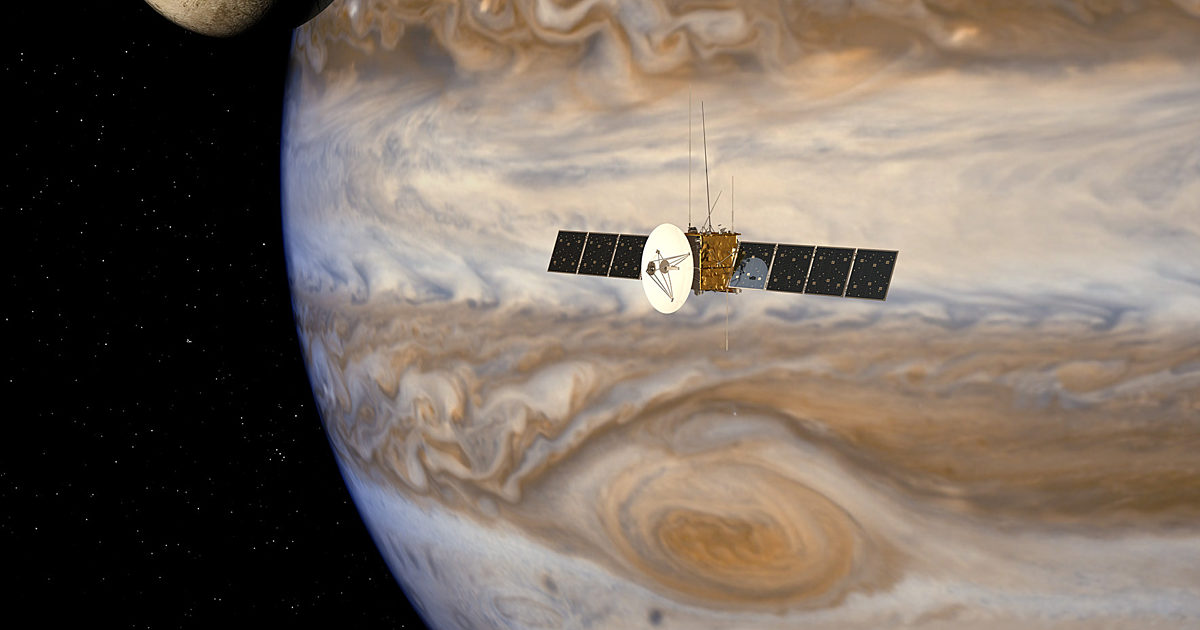
Why is ESA sending the JUICE spacecraft to Jupiter?
Iconic missions to the outer solar system like Voyager 1 and 2, Galileo, and Cassini gave us a close look at the giant planets’ largest moons. Once thought of as inactive, cold conglomerates of ice and rock, we know that these distant moons are planet-like worlds with rich histories.
While our search for life in the universe was once restricted to Earth-like planets, with terrestrial atmospheres and surface oceans, such icy moons with potentially habitable underground oceans offer new horizons.
Jupiter’s three largest icy moons — Europa, Ganymede and Callisto — all show hints of hosting liquid water oceans beneath their crusts. On Earth, life thrives in the deepest, darkest parts of our oceans near hydrothermal vents. Could life similarly evolve or survive in the oceans floors of these moons? The European Space Agency’s (ESA) boldest mission to date aims to find out.
What is JUICE?
The JUpiter ICy moons Explorer, or JUICE, will give us insights into the evolution and habitability of icy worlds around Jupiter and Jupiter-like exoplanets. JUICE will likely expand our list of places to look for life in the universe.
How will JUICE study Jupiter’s moons?
JUICE is planned to launch in mid-2022 and arrive at Jupiter in 2029. It will spend 2.5 years orbiting Jupiter, often flying within 200 to 1,000 kilometers (about 120 to 620 miles) of the icy moons. In this first phase of the mission, the solar-powered spacecraft will fly by Europa twice, and 12 times past Ganymede and Callisto each, enabling repeated close studies of these moons in unprecedented detail. In the next and final mission phase, JUICE will orbit Ganymede, studying it closely for at least nine months. This would be the first time a spacecraft orbits any moon other than our own.
At 4,800 kilograms (about 10,600 pounds), JUICE is a heavy spacecraft. The complex trajectories JUICE will need to execute to closely study Jupiter’s icy moons requires it to carry almost 3,000 kilograms (roughly 6,600 pounds) of fuel. JUICE will carry 10 state-of-the-art instruments, which together only weigh 104 kilograms (about 230 pounds) thanks to the experience gained by ESA in past missions.
"juice" - Google News
August 17, 2021 at 03:35AM
https://ift.tt/3yU0g98
JUICE, exploring Jupiter's icy moons - The Planetary Society
"juice" - Google News
https://ift.tt/2yYYfhU
https://ift.tt/3aVawBg
Bagikan Berita Ini















0 Response to "JUICE, exploring Jupiter's icy moons - The Planetary Society"
Post a Comment